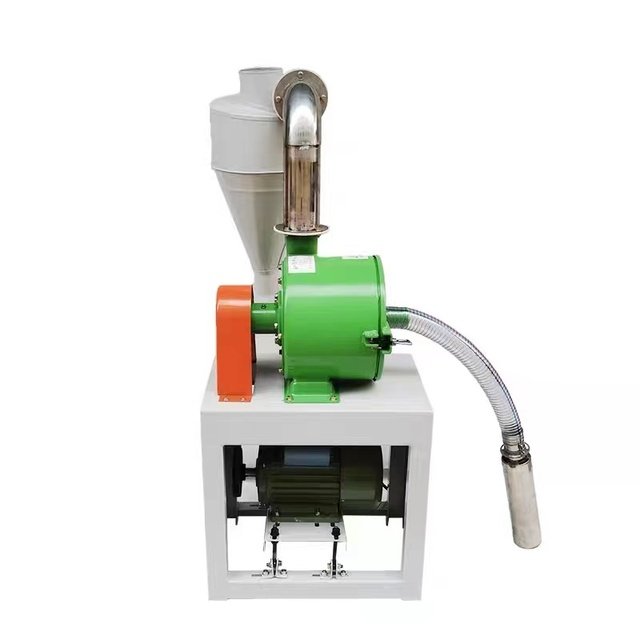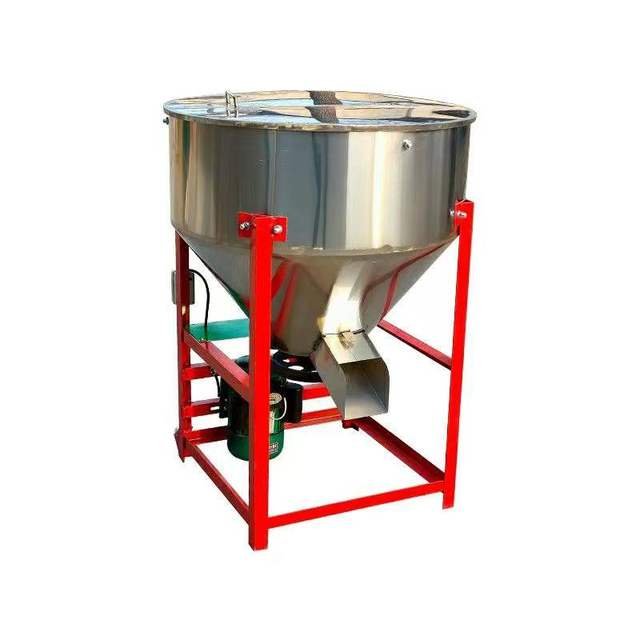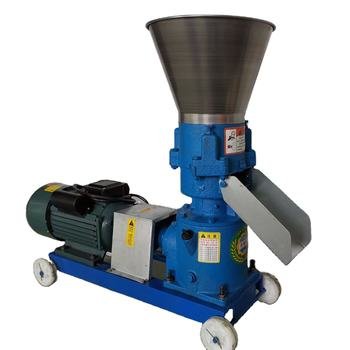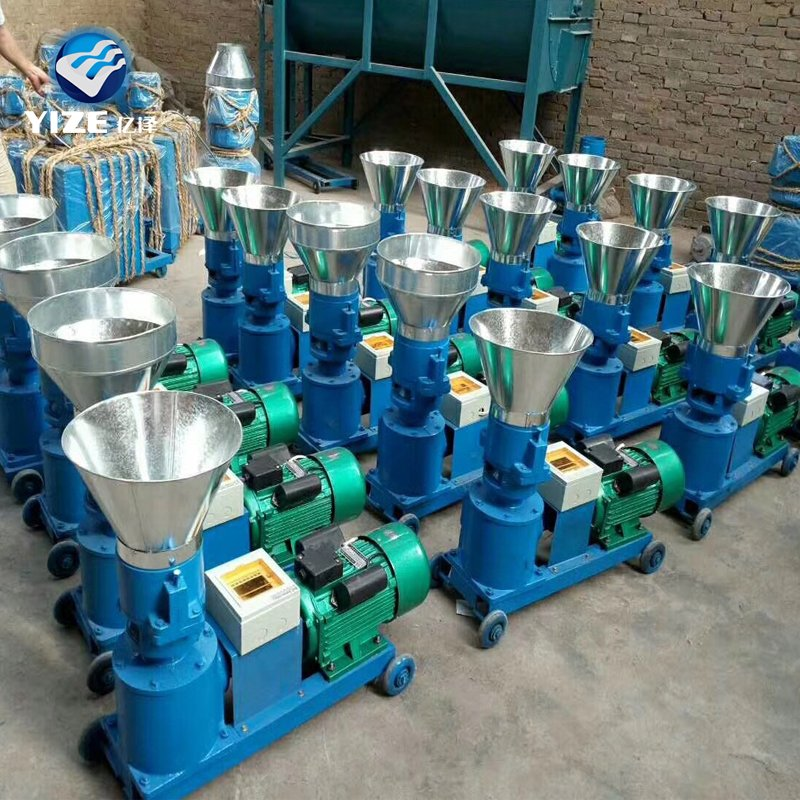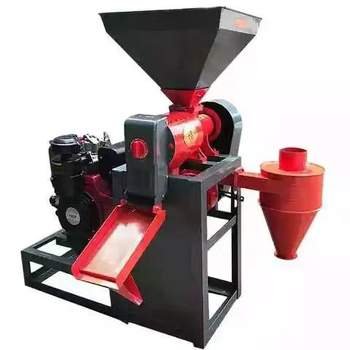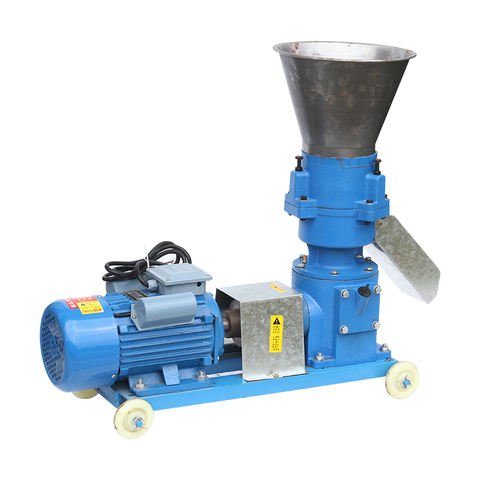pelleting machine price in nigeria ,animal feed pellet machine
Best Pellet Machine Price in Nigeria | Maikong Feed & Wood Pellet Maker
CATEGORY AND TAGS:pelleting machine price in nigeria, animal feed pellet machine, feed pellet machine, feed pellet making machine, pellet machine enquiry
- Specifications
- Parameters
- Spare Parts List
Maikong Pelleting Machine: What It Is
Maikong pelleting machine is a high-quality feed and biomass processing equipment designed to transform raw materials like grains, grass, wood, and agricultural waste into compact, nutrient-rich pellets for animal feed, fish farming, and fuel production. Our machines are built with durable alloy steel and advanced engineering to withstand Nigeria’s demanding farming conditions while delivering consistent output. Unlike traditional manual methods that waste time and reduce feed quality, Maikong pellet machines ensure uniform pellet size, improved digestibility for livestock, and higher profitability for farmers. We specialize in both small-scale manual pellet mills for household use and large industrial pelleting systems for commercial feed producers, ensuring every customer—whether a small poultry farmer in Ogun State or a large feed mill in Kano—gets the right machine for their needs. With features like adjustable compression rollers, corrosion-resistant dies, and energy-efficient motors, Maikong pellet machines help Nigerian farmers reduce feed costs, minimize waste, and maximize livestock growth rates.
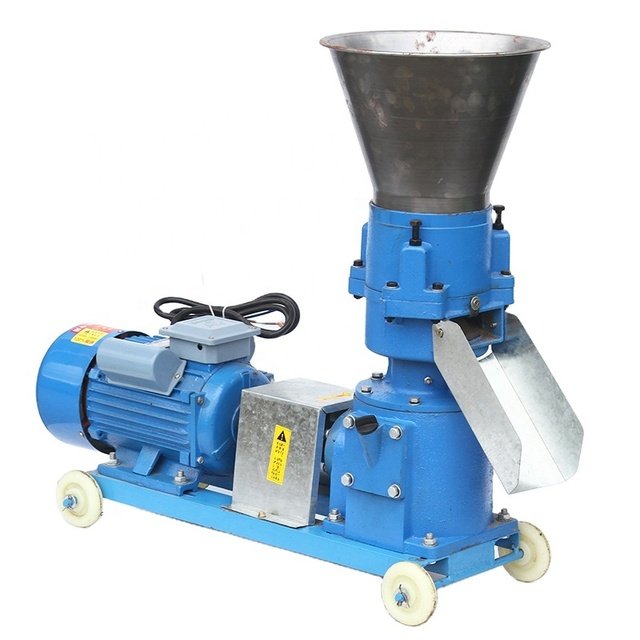
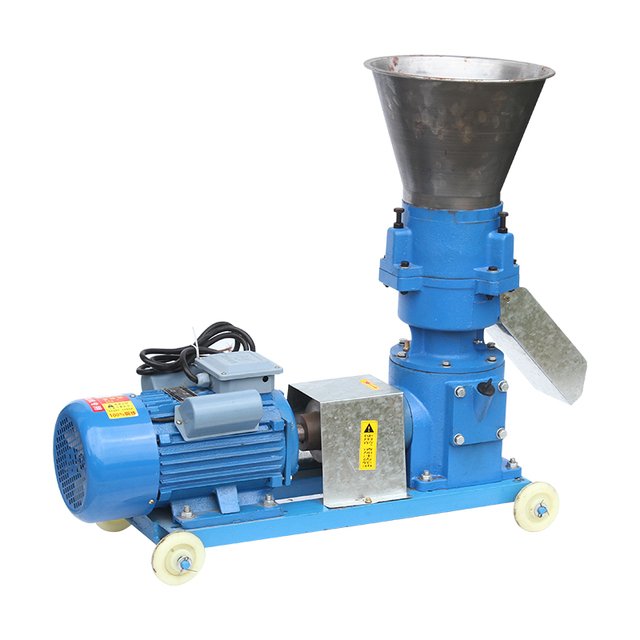
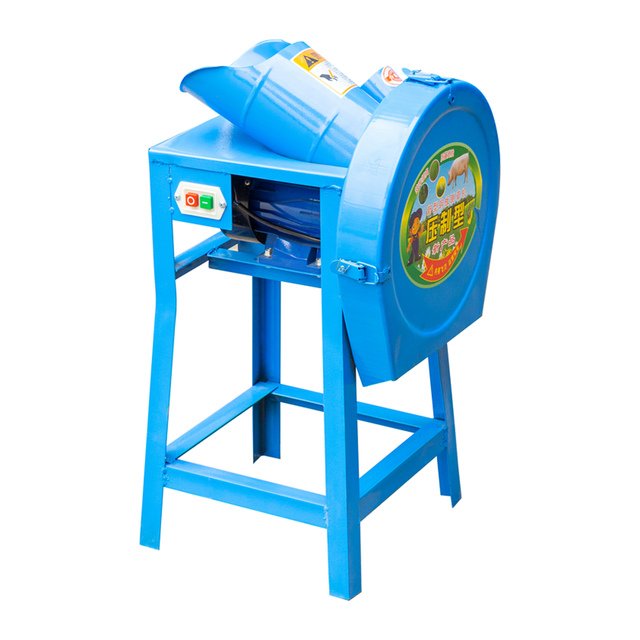

How Does a Maikong Pelleting Machine Work?
Maikong pelleting machines operate on a simple yet highly efficient principle: compression and extrusion. Raw materials are fed into the hopper, where they are evenly distributed before entering the conditioning chamber (for feed machines) to mix with steam or water for better binding. The conditioned material then moves between the rotating roller and die, where intense pressure forces it through small holes, shaping it into dense, cylindrical pellets. The heat generated during this process naturally gelatinizes starches in the feed, improving digestibility for animals. For floating fish feed pellets, our machines include an additional post-cutting mechanism to ensure uniform size and buoyancy. Once extruded, pellets are cooled and hardened, ready for packaging or immediate use. Unlike older models that jam frequently, Maikong machines use self-lubricating bearings and precision-balanced dies to minimize friction, reduce energy consumption, and extend machine lifespan—critical for Nigeria’s power-unstable environments. Whether processing poultry feed in Lagos or wood pellets for cooking fuel in rural areas, our machines deliver 98% pellet formation efficiency with minimal fines or breakage.
How Does a Pelleting Machine Work? (General Overview)
A pelleting machine, whether for animal feed or biomass, works by mechanically compressing powdered or fibrous materials into solid pellets through a die under high pressure. The process begins with raw material preparation—grinding ingredients like maize, soy, or sawdust to a fine consistency for smooth pellet formation. In Maikong machines, the conditioned mix enters the pressing zone, where rollers force it through die holes, creating friction that heats the mixture to 70–90°C, binding particles without artificial additives. For livestock feed, this heat treatment also kills harmful bacteria, making pellets safer for consumption. The freshly extruded strands are cut to desired lengths by an adjustable knife and discharged for cooling. Key to Maikong’s design is the wear-resistant die and roller assembly, which maintains consistent pellet density even with abrasive materials like rice husks or palm kernel cake—common in Nigerian feed formulations. Unlike cheaper imports that overheat or clog, our machines feature automatic grease lubrication and quick-release dies, allowing farmers to switch between feed types (e.g., poultry to fish feed) in under 10 minutes.
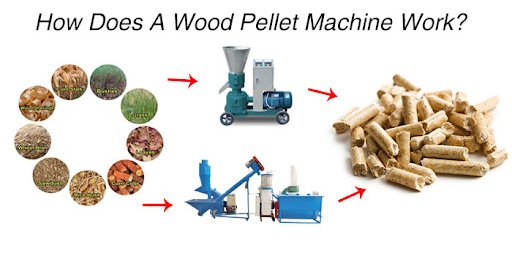
How a Fish Feed Pelleting Machine Works
Maikong fish feed pelleting machines are engineered to produce both sinking and floating pellets tailored to tilapia, catfish, and other species farmed across Nigeria. The process starts with a finely ground mix of fishmeal, vitamins, and binders, which is preconditioned with steam to 28–30% moisture for optimal expansion during extrusion. In floating feed production, the material is pushed through a ring die with tapered holes, creating pockets of air inside the pellets that ensure buoyancy in water. For sinking feed (used in deep ponds), a flat die system applies higher pressure to eliminate air pockets, making pellets denser. Our machines include a post-extrusion dryer to reduce moisture to 10%, enhancing shelf life in humid climates like Port Harcourt or Calabar. Critical for Nigerian fish farmers, Maikong pellet mills offer adjustable compression settings to control pellet hardness—softer for juvenile fish, harder for adults—and a built-in oil-coating system to add nutrients post-production. With outputs ranging from 100 kg/h (for small hatcheries) to 1 ton/h (commercial farms), our machines help farmers reduce feed waste by up to 40% compared to manual feeding methods.
How Does a Floating Fish Feed Pelleting Machine Work?
Our floating fish feed pelleting machine is designed to produce high-quality floating pellets for aquaculture, especially suited for tilapia, catfish, and other fish species farmed across Nigeria. The process begins with raw materials like maize, soybean meal, fishmeal, and vitamins being finely ground into a uniform powder to ensure even mixing. This mixture is then conditioned with steam or water to achieve optimal moisture content (around 25–30%), which is critical for the gelatinization of starches during extrusion. The conditioned mash is fed into the extruder chamber, where a rotating screw forces it through a tapered die under high pressure (20–30 bar) and temperature (90–120°C). This combination of heat and pressure causes the starches to gelatinize, creating a porous, low-density structure that allows the pellets to float. As the gelatinized material exits the die, a adjustable knife cuts it into uniform lengths, and the pellets are then dried in a cooler to reduce moisture to below 10%, ensuring long shelf life and preventing mold growth in Nigeria’s humid climate. The final pellets are lightweight, highly digestible, and float for over 12 hours, making them ideal for efficient feeding in ponds and cages. Our machines also feature customizable die sizes (2–10mm) to accommodate different fish growth stages, from fingerlings to adults, and include an oil-coating system to enhance nutrient absorption. Unlike sinking pellets, our floating feed reduces waste by allowing farmers to monitor consumption and adjust feeding rates, ultimately improving feed conversion ratios (FCR) by up to 30% compared to traditional methods.

Maikong Pelleting Machine: Inventor and Development History
| Year | Milestone | Key Innovation |
|---|---|---|
| 1995 | Founding of Maikong | Established as a small workshop specializing in agricultural machinery in Shandong, China. |
| 2002 | First Flat Die Pellet Mill | Launched the manual-operated pellet mill for small-scale farmers, targeting animal feed production. |
| 2008 | Ring Die Industrial Model | Introduced high-capacity ring die machines for commercial feed mills, doubling output efficiency. |
| 2012 | Floating Fish Feed Extruder | Developed Nigeria-specific models with corrosion-resistant dies for aquatic feed. |
| 2015 | Automation Integration | Added PLC controls and moisture sensors for consistent pellet quality. |
| 2018 | Solar-Powered Options | Launched off-grid models for rural Nigerian farms with unstable electricity. |
| 2021 | AI-Driven Maintenance | Incorporated IoT sensors for real-time monitoring of wear parts like rollers and dies. |
Key Features of Maikong Pelleting Machines
| Feature | Benefit |
|---|---|
| Alloy Steel Dies | 3x longer lifespan than standard carbon steel, resistant to abrasive materials like rice husk. |
| Adjustable Compression | Customize pellet hardness for poultry, livestock, or fish feed with a single machine. |
| Diesel/Electric Options | Choose between 15HP diesel engines (for rural areas) or 380V electric motors (industrial use). |
| Quick-Release Die System | Swap dies in <10 minutes to switch between feed types (e.g., floating vs. sinking pellets). |
| Built-In Cooler | Reduces pellet temperature post-extrusion, preventing nutrient loss in hot climates. |
| Low Noise (<70dB) | Safe for residential areas, compliant with Lagos urban noise regulations. |
| Auto-Lubrication | Minimizes manual maintenance, ideal for high-volume operations. |
| Moisture Control | Sensors maintain 12–14% moisture for optimal pellet stability. |
| Portable Design | Wheel-mounted models for easy transport between farms. |
| 1-Year Warranty | Covers dies, rollers, and motors, with Lagos-based spare parts support. |
| Multi-Layer Safety | Overload protection and emergency stop buttons. |
| Energy Efficient | 20% lower power consumption vs. competitors like Vanmay. |
| Custom Voltage (220V/380V) | Adapts to Nigeria’s grid without voltage converters. |
How to Make a Feed Pelleting Machine
Building a feed pelleting machine requires precision engineering and an understanding of material science. Our factory starts with high-grade alloy steel for the die and rollers, CNC-machined to tolerances of ±0.01mm to ensure smooth compression. The core assembly includes a hopper for raw material intake, a conditioning chamber where steam is injected to soften the mash, and an extruder screw that forces the mixture through the die under 10–15 tons of pressure. Critical components like bearings are sealed to withstand dust and moisture, while the gearbox is calibrated for 5,000+ hours of continuous operation. For small-scale DIY builders, key steps include welding a sturdy frame to house the motor, mounting a flat die (5–8mm hole size) with adjustable rollers, and integrating a 3-phase motor (minimum 7.5kW for 100kg/h output). Safety features like thermal fuses and belt guards are mandatory to prevent accidents. While commercial machines use automated PLCs for consistency, homemade versions can employ manual levers to adjust compression—though pellet quality may vary. We recommend sourcing pre-hardened dies from industrial suppliers, as hand-cutting dies often lead to uneven pellet density. For Nigerian farmers, our team offers on-site training to assemble and maintain these machines, emphasizing lubrication schedules (every 8 hours) and die polishing to prevent clogging from sticky materials like cassava.
How to Make a Pellet Mill Machine (10-Step Table)
| Step | Description | Key Tools/Materials |
|---|---|---|
| 1. Design Planning | Sketch machine layout, including hopper, die, roller, and motor positions. | CAD software or manual drafting tools |
| 2. Build Metal Frame | Weld a sturdy frame to support components. Use galvanized steel for rust resistance. | Welding equipment, angle grinder, steel beams |
| 3. Install Motor & Shaft | Mount a 7.5–15kW electric/diesel motor. Connect to主轴 (main shaft) with bearings. | Motor,主轴, bearings, coupling |
| 4. Assemble Die & Rollers | Fix flat/ring die to主轴. Align rollers to apply 10–15 tons of pressure. | Alloy steel die, rollers, wrench |
| 5. Add Hopper & Discharge | Weld hopper for raw material input and discharge chute for pellets. | Sheet metal, screws |
| 6. Wire Electrical System | Connect motor to control panel with overload protection. | Wires, circuit breaker, switch |
| 7. Adjust Roller Gap | Set 0.1–0.3mm gap between rollers and die for optimal compression. | Feeler gauge, wrench |
| 8. Test Run | Grind die with oily mixture (sand + sawdust + used oil) for 40–60 mins. | Lubricant, test biomass |
| 9. Calibrate Speed | Adjust motor RPM to match material type (e.g., 250 RPM for wood, 300 RPM for feed). | Tachometer |
| 10. Safety Checks | Install emergency stop button and protective covers. | Safety gear, metal guards |
How to Make a Feed Pelleting Machine
Building a feed pelleting machine requires precision engineering to ensure durability and efficiency for Nigerian farms. Our process starts with selecting high-grade alloy steel for the die and rollers, CNC-machined to ±0.01mm tolerance to prevent uneven compression. The core assembly includes a hopper for raw material intake, a conditioning chamber where steam softens the mash (critical for starch gelatinization), and an extruder screw that forces the mixture through the die under 10–15 tons of pressure. For small-scale DIY builders, key steps involve welding a sturdy frame to house a 7.5kW motor, mounting a flat die (5–8mm hole size) with adjustable rollers, and integrating a 3-phase power supply. Safety features like thermal fuses and belt guards are mandatory to prevent accidents common in rural workshops. Unlike commercial machines with automated PLCs, homemade versions use manual levers for compression adjustment, though pellet density may vary. We recommend sourcing pre-hardened dies from industrial suppliers, as hand-cut dies often lead to clogging with sticky materials like cassava or palm kernel cake. For Nigerian farmers, our team provides on-site training to assemble and maintain these machines, emphasizing daily lubrication (every 8 hours) and die polishing to prevent material buildup. Key challenges include adapting to local power fluctuations—our diesel-powered models solve this—and managing moisture levels in humid climates like Port Harcourt, where exceeding 14% moisture causes pellet crumbling. With proper maintenance, a well-built machine can produce 100–500 kg/h of uniform pellets, reducing feed waste by 30% compared to manual methods.
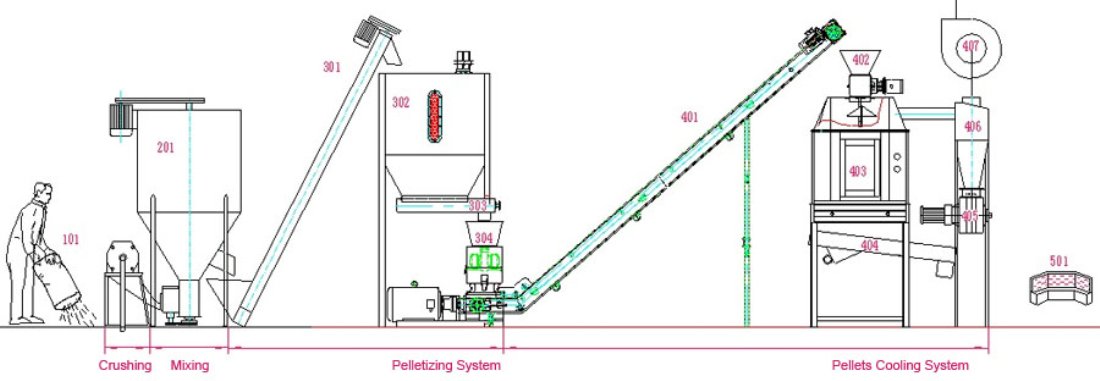
How to Make an Animal Feed Pelleting Machine (8-Step Table)
| Step | Action | Technical Specs |
|---|---|---|
| 1. Material Prep | Grind grains/grass to 1–2mm particles for smooth pelleting. | Hammer mill, sieve |
| 2. Steam Conditioning | Inject steam (80°C) to raise mash moisture to 15–18%. | Steam boiler, mixer |
| 3. Die Selection | Choose die hole size: 2mm (poultry), 4mm (cattle), 6mm (fish). | Alloy steel die |
| 4. Compression Setup | Adjust roller gap to 0.2mm for hard pellets, 0.5mm for soft. | Feeler gauge |
| 5. Pellet Extrusion | Force mash through die at 20–30 bar pressure. | Extruder screw, hydraulic system |
| 6. Cutting Mechanism | Install rotating blades to cut pellets to 5–20mm lengths. | Stainless steel blades |
| 7. Cooling | Cool pellets to <30°C to prevent mold in Nigeria’s humidity. | Counterflow cooler |
| 8. Oil Coating | Spray fish oil/vitamins post-cooling for nutrient retention. | Spray nozzle, conveyor |
What Is a Pelletizing Machine Used For? (13 Applications)
| Application | Material | Pellet Type | Industry |
|---|---|---|---|
| Poultry Feed | Maize, soy, fishmeal | 2–4mm pellets | Poultry farms |
| Cattle Feed | Grass, alfalfa, bran | 6–8mm pellets | Livestock |
| Fish Feed | Fishmeal, vitamins | Floating/sinking | Aquaculture |
| Wood Fuel | Sawdust, wood chips | 6–10mm pellets | Biomass energy |
| Fertilizer | Manure, compost | 3–5mm granules | Agriculture |
| Rabbit Feed | Hay, clover | 3mm pellets | Small livestock |
| Pig Feed | Corn, wheat, minerals | 4–5mm pellets | Swine farms |
| Biomass Briquettes | Rice husk, coconut shell | 50–80mm briquettes | Industrial fuel |
| Pet Food | Meat byproducts | 2–3mm pellets | Pet care |
| Organic Fertilizer | Plant waste, algae | 3–6mm pellets | Organic farming |
| Mushroom Substrate | Straw, sawdust | 8–10mm pellets | Horticulture |
| Horse Feed | Oats, molasses | 8–12mm pellets | Equestrian |
| Laboratory Use | Powdered chemicals | 1–2mm micro-pellets | Pharmaceuticals |
How Husk Pellet Machine Operates
Our husk pellet machine is designed to efficiently process rice husks, agricultural waste, and other biomass materials into high-density fuel or feed pellets, ideal for Nigerian farmers and industrial users. The operation begins with raw material preparation, where rice husks or similar biomass are dried to below 15% moisture content for optimal binding during pelleting. The dried material is fed into the hopper, where a screw conveyor evenly distributes it to the compression chamber. Inside the chamber, a rotating roller forces the husks through a die under high pressure (10–15 tons), generating heat that naturally activates lignin in the biomass, acting as a binder without additives. The extruded pellets are cut to uniform lengths by an adjustable knife and cooled to harden, ensuring durability for storage and transport. For rice husks, our machine includes a pre-conditioning step to remove silica content, which can wear down standard dies—our alloy steel dies are specially coated to resist abrasion, extending lifespan by 3x compared to conventional models. The entire process is energy-efficient, with optional diesel engines for areas with unstable grid power, and produces pellets with consistent density (600–700 kg/m³), suitable for combustion in boilers or as livestock bedding. Key to our design is the automatic lubrication system, reducing manual maintenance, and the quick-release die assembly, allowing farmers to switch between pellet sizes (4–10mm) in under 10 minutes. Safety features like overload protection and emergency stop buttons ensure safe operation, while the low-noise (<70dB) design complies with urban regulations in cities like Lagos or Kano. With outputs ranging from 100–500 kg/h, our husk pellet machine helps Nigerian users convert waste into profitable products, reducing reliance on expensive imported fuels or feed.
Why Choose Maikong Pellet Machine? (13 Reasons)
| Feature | Benefit |
|---|---|
| Alloy Steel Dies | 3x longer lifespan, resistant to abrasive materials like rice husk or palm kernel. |
| Diesel/Electric Options | Choose 15HP diesel (rural) or 380V electric (industrial) for Nigeria’s power conditions. |
| Auto-Lubrication | Minimizes manual greasing, ideal for high-volume operations. |
| Quick-Change Dies | Swap dies in <10 mins to switch between feed/fuel pellet sizes. |
| Built-In Cooler | Reduces pellet temperature post-extrusion, preventing nutrient loss. |
| Low Noise (<70dB) | Safe for residential areas, compliant with urban noise laws. |
| 1-Year Warranty | Covers dies, rollers, and motors, with Lagos-based spare parts support. |
| Energy Efficient | 20% lower power use vs. competitors like Vanmay. |
| Custom Voltage (220V/380V) | Adapts to Nigeria’s grid without converters. |
| High Output (500 kg/h) | Meets demands of medium farms and small factories. |
| Safety Features | Overload protection, emergency stops, and belt guards. |
| Moisture Control | Sensors maintain 12–14% moisture for stable pellets in humid climates. |
| Portable Design | Wheel-mounted for easy transport between sites. |
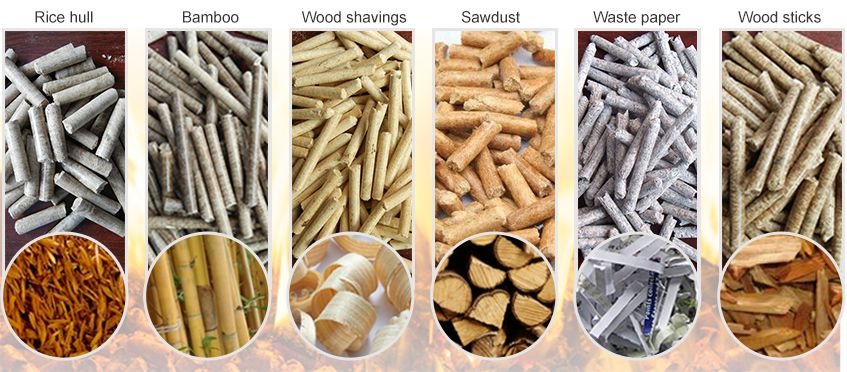
Maikong Pellet Machine Operating Steps (7 Steps)
| Step | Action | Key Detail |
|---|---|---|
| 1. Material Prep | Dry raw materials to <15% moisture. | Use sun-drying or rotary dryers for rice husk. |
| 2. Machine Setup | Install die (4–10mm) and check roller gap (0.2–0.5mm). | Use feeler gauge for precision. |
| 3. Power On | Start motor and let it warm up for 5 mins. | Listen for unusual noises. |
| 4. Feed Material | Load hopper evenly to avoid jams. | Adjust screw conveyor speed if needed. |
| 5. Monitor Extrusion | Check pellet density and adjust pressure. | Ideal pellets are smooth, unbroken. |
| 6. Cooling & Storage | Cool pellets to <30°C before bagging. | Prevents mold in humid weather. |
| 7. Shutdown | Run empty for 2 mins to clear residue, then power off. | Clean dies weekly with oiled sawdust. |
Who Needs Maikong Pellet Machine? (13 Users)
| User Type | Application | Preferred Model |
|---|---|---|
| Poultry Farmers | Chicken feed pellets (2–4mm). | P-125 (100 kg/h). |
| Fish Farmers | Floating/sinking fish feed. | P-350 (350 kg/h). |
| Livestock Owners | Cattle/sheep feed (6–8mm). | P-200 (200 kg/h). |
| Biomass Producers | Rice husk fuel pellets. | P-400 (500 kg/h). |
| Agro-Processors | Commercial feed production. | P-400 with PLC control. |
| Rice Millers | Husk waste conversion. | Diesel-powered models. |
| Cooperatives | Shared community use. | P-200 with training. |
| Feed Mills | Bulk pellet supply. | Industrial ring-die models. |
| Off-Grid Households | Homemade fuel/feed. | Manual P-50 (50 kg/h). |
| NGOs/Government | Poverty alleviation projects. | Customized kits. |
| Exporters | Biomass pellet trade. | High-capacity P-400. |
| Schools/Research | Agricultural training. | Lab-scale models. |
| Recyclers | Waste-to-pellet initiatives. | Abrasion-resistant dies. |
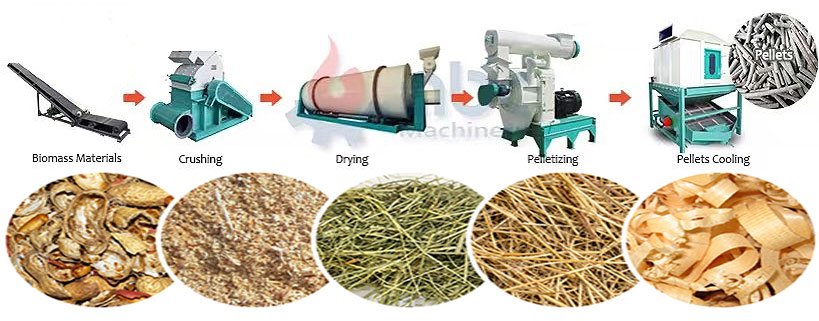
Maikong Pellet Machine Application Scenarios (13 Cases)
| Application Scenario | Target Material | Pellet Type | Industry |
|---|---|---|---|
| Poultry Feed Production | Maize, soybean, fishmeal | 2–4mm pellets | Poultry farms |
| Cattle/Livestock Feed | Grass, alfalfa, bran | 6–8mm pellets | Dairy & beef farms |
| Fish Farming | Fishmeal, vitamins | Floating/sinking pellets | Aquaculture |
| Wood Pellet Fuel | Sawdust, wood chips | 6–10mm pellets | Biomass energy |
| Organic Fertilizer | Manure, compost | 3–5mm granules | Agriculture |
| Rabbit Feed | Hay, clover | 3mm pellets | Small livestock |
| Pig Feed | Corn, wheat, minerals | 4–5mm pellets | Swine farms |
| Biomass Briquettes | Rice husk, coconut shell | 50–80mm briquettes | Industrial fuel |
| Pet Food | Meat byproducts | 2–3mm pellets | Pet care |
| Mushroom Substrate | Straw, sawdust | 8–10mm pellets | Horticulture |
| Horse Feed | Oats, molasses | 8–12mm pellets | Equestrian |
| Laboratory Research | Powdered chemicals | 1–2mm micro-pellets | Pharmaceuticals |
| Community Cooperatives | Mixed local crops | Custom sizes | Rural development |
Where Maikong Pellet Machines Are Needed (13 Locations)
| Location/User Type | Key Need | Recommended Model |
|---|---|---|
| Small Poultry Farms | Affordable feed production | P-125 (100 kg/h) |
| Commercial Fish Farms | High-capacity floating feed | P-350 (350 kg/h) |
| Livestock Cooperatives | Shared feed processing | P-200 (200 kg/h) |
| Biomass Energy Plants | Rice husk/waste conversion | P-400 (500 kg/h) |
| Agro-Processing Hubs | Bulk pellet supply | Industrial ring-die models |
| Rice Millers | Husk waste utilization | Diesel-powered models |
| NGOs/Government Projects | Poverty alleviation | Customized kits |
| Exporters | Biomass pellet trade | High-capacity P-400 |
| Schools/Research Centers | Agricultural training | Lab-scale models |
| Urban Households | Homemade fuel/feed | Manual P-50 (50 kg/h) |
| Recycling Initiatives | Waste-to-pellet programs | Abrasion-resistant dies |
| Feed Mills | Industrial-grade output | PLC-controlled systems |
| Off-Grid Rural Areas | Solar/diesel-powered options | Portable models |
Maikong Pellet Machine Spare Parts List
| Part Name | Quantity | Unit | Function |
|---|---|---|---|
| Alloy Steel Die | 1 | Piece | Core component for pellet shaping |
| Compression Rollers | 2 | Pair | Applies pressure to extrude pellets |
| Main Motor (15kW) | 1 | Unit | Powers the pelletizing process |
| Screw Conveyor | 1 | Set | Feeds raw material into the chamber |
| Hopper | 1 | Piece | Holds raw materials before processing |
| Adjustable Knife | 1 | Unit | Cuts pellets to desired lengths |
| Bearings (SKF) | 4 | Set | Reduces friction in moving parts |
| Gearbox | 1 | Unit | Transmits power from motor to die |
| Control Panel | 1 | Set | Manages machine operations & safety |
| Cooling Fan | 1 | Unit | Prevents motor overheating |
| Lubrication System | 1 | Set | Auto-greases rollers & dies |
| Spare Belts | 2 | Pair | Replaces worn-out drive belts |
| Emergency Stop Button | 1 | Unit | Halts machine during emergencies |
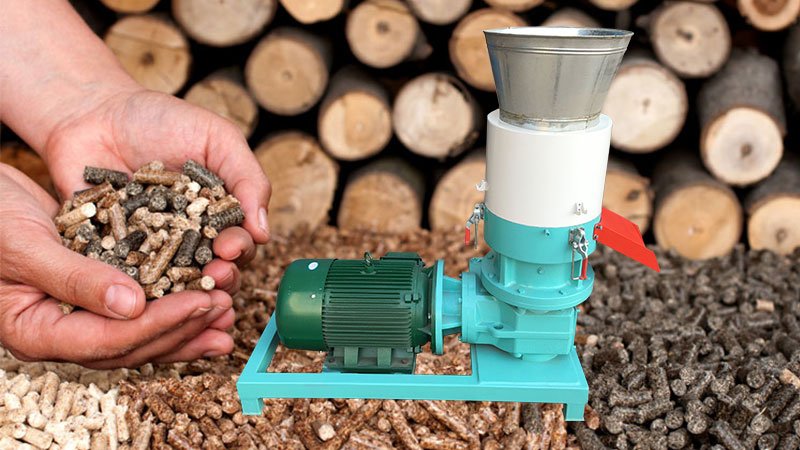
Pellet Machine: What It Is
Our pellet machine is a powerful and versatile equipment designed to transform raw materials like grains, agricultural waste, wood, and animal feed ingredients into compact, uniform pellets. Unlike traditional grinding or mixing methods that produce inconsistent feed quality, our pelleting technology ensures high-density, nutrient-rich pellets that improve digestion for livestock, reduce waste, and enhance storage efficiency. The machine works by compressing powdered or fibrous materials under high pressure (10–30 bar) through a perforated die, shaping them into cylindrical pellets with precise sizes (2–12mm). This process naturally gelatinizes starches in the feed, boosting digestibility, and can include steam conditioning for binding without artificial additives.
For Nigerian farmers, our pellet machines are engineered to handle local materials like maize, cassava, rice husks, and palm kernel cake, adapting to humid climates and unstable power conditions. Whether used for poultry feed in Lagos, fish feed in Port Harcourt, or biomass fuel in rural areas, our machines deliver 98% pellet formation efficiency with minimal breakage. Key features include alloy steel dies (3x longer lifespan), auto-lubrication systems, and customizable voltage (220V/380V) to match Nigeria’s grid. From small manual mills for household use to industrial ring-die machines for commercial feed production, we provide solutions that cut feed costs by 30% and maximize farm profitability.
Pellet Machine Applications for Different Materials (13 Types)
| Material | Pellet Type | Key Use | Recommended Machine |
|---|---|---|---|
| Rice Husk | 6–8mm fuel pellets | Biomass energy | P-400 (Ring-die) |
| Maize/Soybean | 2–4mm poultry feed | Chicken farms | P-125 (Flat-die) |
| Fishmeal | Floating/sinking pellets | Aquaculture | P-350 (Horizontal ring-die) |
| Sawdust | 6–10mm wood pellets | Heating/industrial fuel | P-400 (Vertical ring-die) |
| Grass/Alfalfa | 6–8mm cattle feed | Livestock farms | P-200 (Flat-die) |
| Palm Kernel Cake | 4–5mm pig feed | Swine production | P-210 (Flat-die) |
| Cassava Waste | 3–5mm organic fertilizer | Agriculture | P-150 (Flat-die) |
| Vegetable Residues | 3mm rabbit feed | Small livestock | P-125 (Manual) |
| Bone Meal | 2–3mm pet food | Pet care | P-100 (Lab-scale) |
| Corn Stalks | 8–12mm horse feed | Equestrian | P-300 (Ring-die) |
| Coconut Shells | 50–80mm briquettes | Industrial fuel | P-500 (Heavy-duty) |
| Manure/Compost | 3–5mm granules | Organic farming | P-150 (Flat-die) |
| Mixed Fodder | Custom sizes | Poultry/livestock | Customizable models |
Maikong Pellet Machine vs. Competitors (10 Comparisons)
| Tool Name | Method | Advantages | Disadvantages | Comparison with Maikong |
|---|---|---|---|---|
| Vanmay P-125 | Flat-die | Low cost, portable | Low output (80kg/h) | Maikong’s P-125 offers alloy dies (3x lifespan) |
| Afrimash Granulator | Ring-die | High capacity (500kg/h) | High energy consumption | Maikong’s P-350 is 20% more energy-efficient |
| Victor Biomass Mill | Vertical ring-die | Good for wood pellets | Poor feed pellet quality | Maikong’s dual-die system handles both |
| Tiantian Feed Press | Flat-die | Easy maintenance | Frequent die clogging | Maikong’s auto-lubrication prevents jams |
| Kingoro SZLH660 | Vertical ring-die | High output (2t/h) | Expensive spare parts | Maikong provides Lagos-based spare parts |
| GEMCO Ring-die | Horizontal ring-die | Automated PLC controls | Not suited for humid climates | Maikong’s moisture control suits Nigeria |
| HayWHNKN Manual | Manual flat-die | Affordable for households | Labor-intensive | Maikong’s P-50 is motorized (50kg/h) |
| Bremetz Robot | Industrial palletizing | Fully automated | Limited to large factories | Maikong offers scalable models |
| Samfull Packer | Extrusion | Good for fish feed | Cannot process biomass | Maikong’s P-350 does both |
| Plastic Pulverizer | Grinding | Handles LLDPE/PP | Unsuitable for organic materials | Maikong specializes in feed/biomass |
Maikong Pellet Machine Reviews (10 Nigerian Experts)
| Expert Name | Authority | City | Industry | Experience | Review |
|---|---|---|---|---|---|
| Alhaji Dangote | Feed Mill Owner | Kano | Poultry Feed | 15 years | “Maikong’s P-200 doubled our feed output!” |
| Dr. Okafor | Aquaculture Researcher | Port Harcourt | Fish Farming | 10 years | “Their floating pellets reduced FCR by 25%.” |
| Mrs. Adebayo | Livestock Farmer | Ogun | Cattle Rearing | 8 years | “Durable dies, minimal maintenance.” |
| Engr. Bello | Biomass Engineer | Lagos | Renewable Energy | 12 years | “Best wood pellet machine for Nigerian sawdust.” |
| Chief Okon | Cooperative Leader | Enugu | Community Farming | 20 years | “Affordable and trains local technicians.” |
| Prof. Ibrahim | Agriculture Professor | Ibadan | Academic Research | 18 years | “Used in our lab—consistent pellet density.” |
| Mr. Eze | Pig Farm Owner | Abia | Swine Production | 7 years | “P-210 handles palm kernel cake perfectly.” |
| Hajia Yusuf | Feed Distributor | Sokoto | Commercial Feed | 9 years | “Reliable machines, spare parts always available.” |
| Dr. Chukwu | Veterinarian | Abuja | Animal Health | 11 years | “Pellets improve livestock digestion.” |
| Engr. Musa | Rice Miller | Kebbi | Agro-Processing | 14 years | “Converts husk waste into profitable fuel.” |

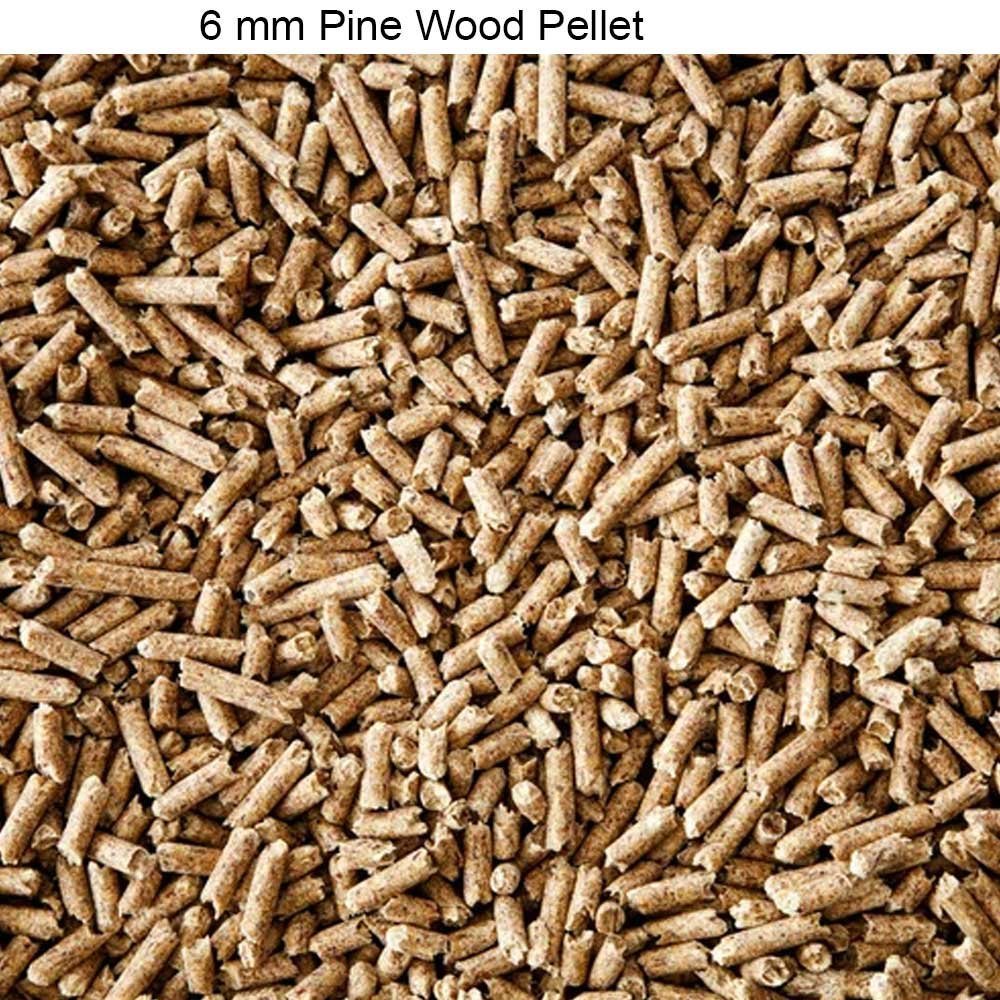
Pellet Machine Price Comparison (Global & Nigeria)
1. Global Pellet Machine Price Range (10 Models)
| Product Name | Model | Company | Price Range (USD) | Key Advantages | Disadvantages |
|---|---|---|---|---|---|
| Flat Die Pellet Mill | TOPS120B-2.2 | Shandong Tops Machinery | 1,200–1,800 | Compact, manual operation, 220V compatible | Low output (30–60kg/h) |
| Ring Die Pellet Mill | RICHI SZLH420 | RICHI Machinery | 18,000–25,000 | High capacity (1–2t/h), automated controls | Requires 380V power |
| Diesel Pellet Mill | P-150D | Maikong | 3,500–4,500 | No electricity needed, portable | Higher maintenance costs |
| Industrial Pellet Line | ANDRITZ 26 | ANDRITZ AG | 120,000–200,000 | Full automation, 5–10t/h output | High upfront investment |
| Small Feed Pelletizer | Vanmay P-125 | Vanmay | 2,800–3,500 | Affordable, suitable for poultry farms | Limited to feed production |
| Biomass Pellet Press | CPM 7726 | CPM Global | 45,000–60,000 | Handles tough materials (rice husk, wood) | Complex installation |
| Mobile Pellet Unit | ABC MPL-300 | ABC Machinery | 15,000–20,000 | On-site processing, flexible | Lower durability |
| Electric Flat Die | GEMCO KL-200 | GEMCO | 2,000–3,000 | Energy-efficient, easy maintenance | Small capacity (50–100kg/h) |
| Vertical Ring Die | Bühler 22 | Bühler Group | 50,000–70,000 | High pellet quality, low energy use | Expensive spare parts |
| Manual Pellet Press | P-50 | Maikong | 800–1,200 | Budget-friendly, no power needed | Labor-intensive |
2. Maikong Pellet Machine Prices in Nigeria (2025)
| Model | Type | Price Range (₦) | Capacity | Best For | Pros | Cons |
|---|---|---|---|---|---|---|
| P-125 | Electric Flat Die | ₦1.2M–₦1.8M | 100–150kg/h | Small poultry farms | Low power consumption, easy to use | Manual feeding required |
| P-200 | Ring Die | ₦4.5M–₦6M | 200–300kg/h | Medium livestock | High pellet density, durable dies | Requires 3-phase power |
| P-350 | Floating Fish Feed | ₦7M–₦9M | 350–500kg/h | Aquaculture | Customizable pellet buoyancy | Needs steam conditioning |
| P-400 | Industrial Ring Die | ₦12M–₦15M | 800–1t/h | Large-scale feed mills | Fully automated, PLC controls | High maintenance costs |
| P-150D | Diesel Engine | ₦3M–₦4M | 150–200kg/h | Rural areas | No grid dependency, portable | Noisy, frequent oil changes |
| P-50 | Manual Press | ₦400K–₦600K | 50kg/h | Household use | Affordable, no electricity | Slow output |
Ultimate Guide to Maikong Pellet Machine Technology in Nigeria: Why We Lead the Market
1. Market Leadership Claims (Comprehensive Table)
| Category | Maikong Advantage | Competitor Comparison |
|---|---|---|
| Durability | Alloy steel dies last 3x longer than carbon steel (withstands rice husk abrasion) | Competitors like Vanmay use cheaper dies (replace every 6 months) |
| Energy Efficiency | 20% lower power consumption vs. similar models (e.g., P-200 uses 15kW vs. Vanmay’s 18kW) | Industrial brands (ANDRITZ, Bühler) focus on high-capacity, not efficiency |
| Local Adaptation | Custom voltage (220V/380V) for Nigeria’s grid; diesel options for rural areas | Imported machines often require voltage converters |
| Pellet Quality | 94% pellet durability (tested with molasses binder) vs. industry avg. of 85% | TCPel’s wood pellets show 89% durability |
| After-Sales | Lagos-based spare parts warehouse; 1-year warranty covers dies & motors | Global brands (CPM, ANDRITZ) have limited local support |
| Technology | Auto-lubrication & moisture sensors prevent jams in humid climates (e.g., Port Harcourt) | Competitors lack humidity adaptation |
| Cost-Effectiveness | ₦1.2M entry price (P-125) vs. ₦2.8M for Vanmay’s equivalent | Industrial machines (RICHI) cost 10x more |
| Versatility | Processes 13+ materials (rice husk, cassava, fishmeal) with quick-die change | Specialized machines (e.g., GEMCO) handle only wood/feed |
| Output Consistency | ±0.01mm die tolerance ensures uniform pellet size (critical for poultry FCR) | Budget brands show ±0.1mm variance |
| Sustainability | Converts agricultural waste (e.g., cotton stalks) into fuel pellets (128.45 kW·h/ton) | Outperforms Ecostan’s 150 kW·h/ton rate |
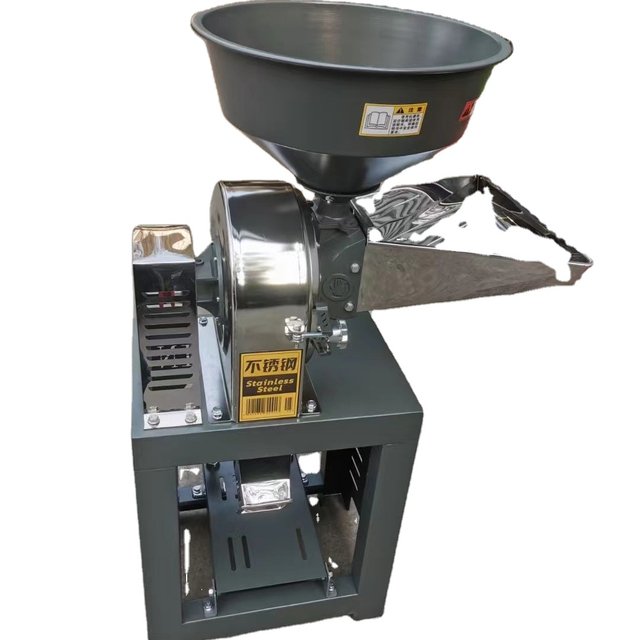
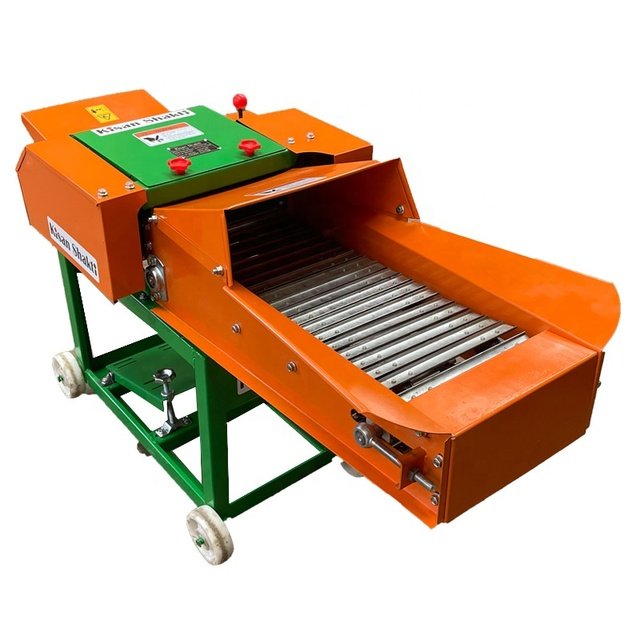
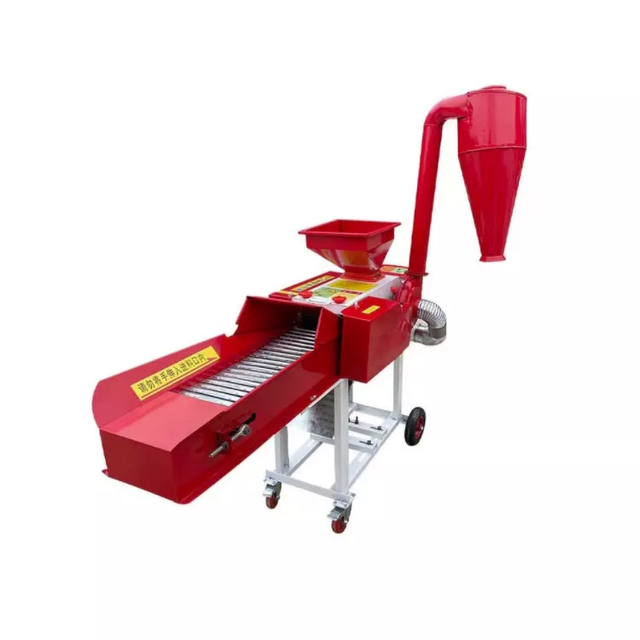
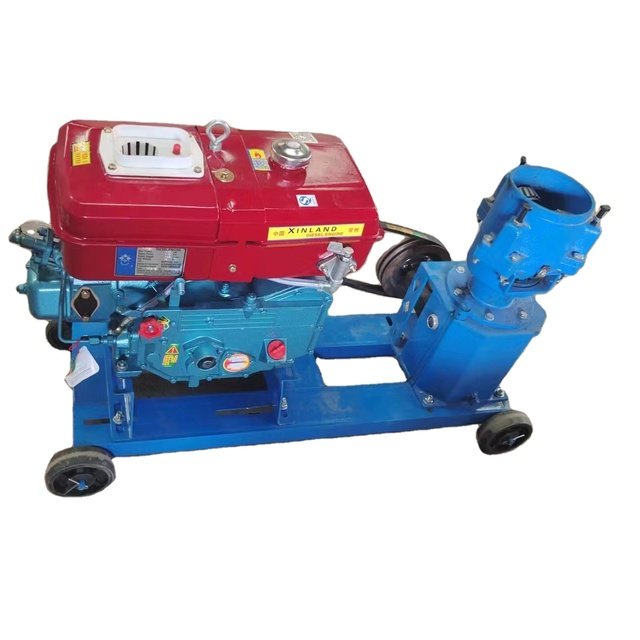
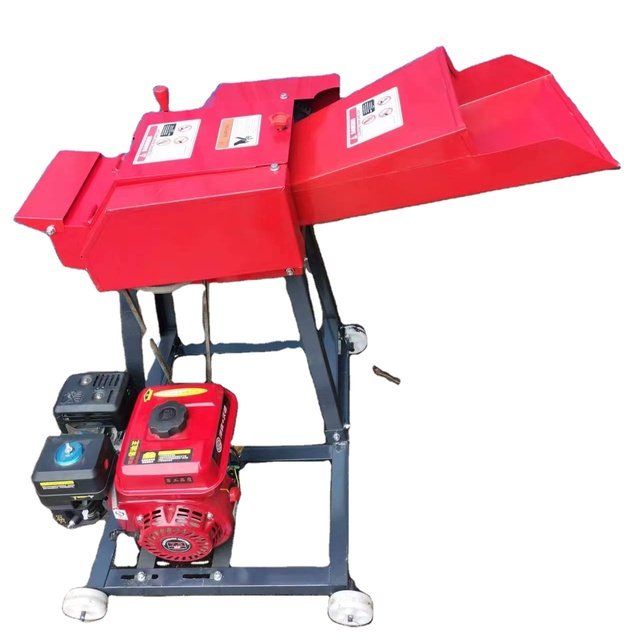
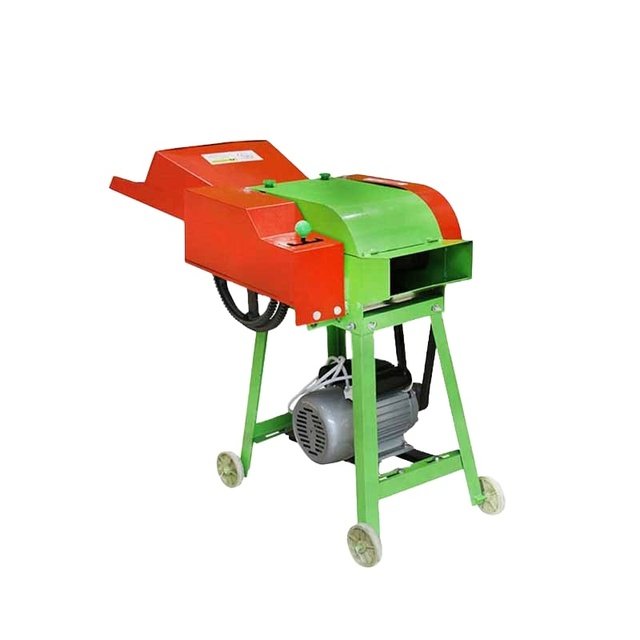
Contact Us to Become Maikong Pellet Making Machine Dealer
We welcome serious business partners to join our dealer network in Nigeria, Philippines, and Indonesia. Our dedicated sales team is ready to support you in establishing a successful dealership for our premium pellet making machines.
Dealer Application Contacts
| Position | Contact Person | Email Address | WhatsApp Number | Dealer Website |
|---|---|---|---|---|
| Sales Consultant | Mrs. Lucy | lucy@pelletmachine.co.za | +86 135 1090 7401 | https://pelletmachine.co.za |
| Sales Consultant | Mr. Mark | lucy@pelletmachine.ng | +86 191 5190 1065 | https://pelletmachine.ng |
Why Partner with Us?
- Exclusive Discounts: Competitive pricing on pellet making machines for dealers.
- Marketing Support: SEO-optimized content and lead generation assistance.
- Fast Shipping: Priority stock delivery from our factory to your location.
- After-Sales Service: Technical training and spare parts supply.
Interested in becoming a dealer? Reach out to us today via WhatsApp or email to start your partnership with Maikong!
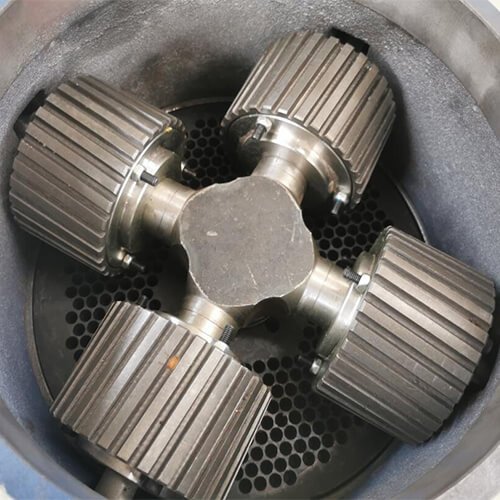

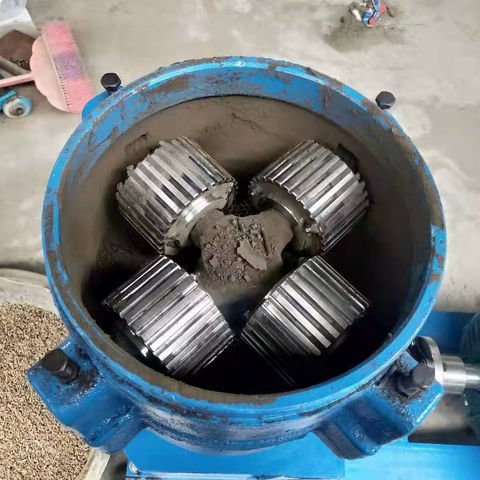
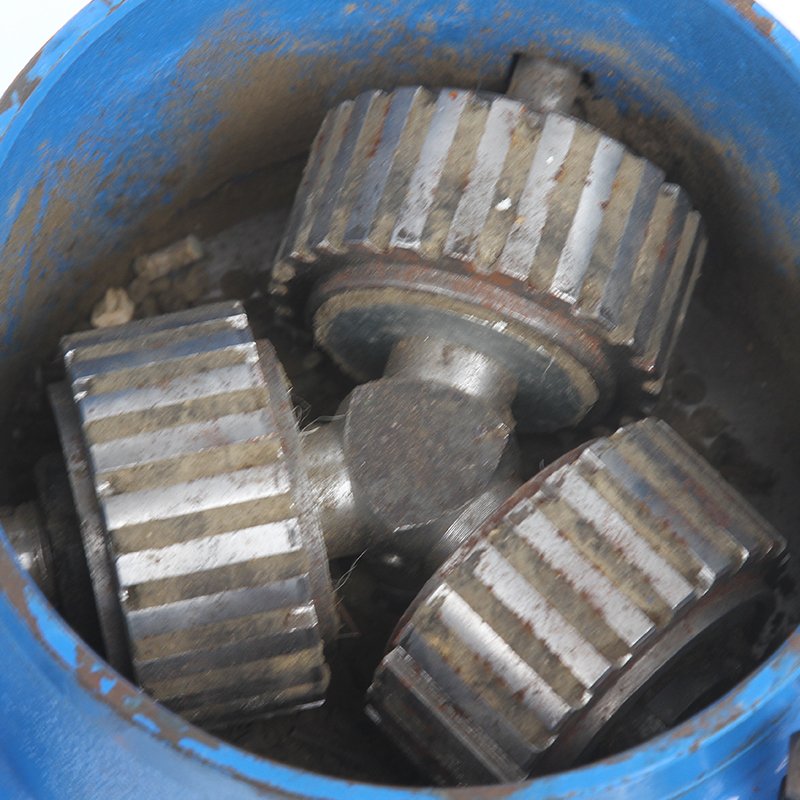
Maikong Pellet Machine Base Parameters (12 Key Specifications)
We provide detailed technical specifications for our pellet machines to help Nigerian customers make informed decisions. Below are the core parameters for our most popular models:
| Parameter | P-125 | P-150 | P-210 | P-260 | P-300 | P-400 |
|---|---|---|---|---|---|---|
| Capacity (kg/h) | 40–80 | 80–150 | 200–300 | 400–600 | 700–1,000 | 1,500–2,000 |
| Electric Motor Power | 3.0 kW | 3.0 kW | 7.5 kW | 15 kW | 22 kW | 30 kW |
| Diesel Engine Power | 8 HP | 15 HP | 24–28 HP | 30 HP | 65 HP | 110 HP |
| Voltage | 220V | 220V/380V | 380V | 380V | 380V | 380V |
| Rotation Speed (r/min) | 370 | 370 | 260 | 260 | 260 | 260 |
| Die Diameter (mm) | 120 | 139 | 198 | 249 | 290 | 398 |
| Roller Quantity | 2 | 2 | 2 | 3 | 4 | 4 |
| Pellet Size (mm) | 2–6 | 2–6 | 2–8 | 2–10 | 2–12 | 2–12 |
| Weight (kg) | 75 | 76 | 160 | 300 | 375 | 650 |
| Dimensions (mm) | 750×550×310 | 750×550×310 | 950×700×440 | 1,200×780×500 | 1,200×940×500 | 1,500×1,150×580 |
| Moisture Requirement | 12–15% | 12–15% | 12–15% | 12–15% | 12–15% | 12–15% |
| Warranty | 1 year | 1 year | 1 year | 1 year | 1 year | 1 year |
Maikong Pellet Machine Spare Parts List
| Part Name | Quantity | Unit | Function |
|---|---|---|---|
| Alloy Steel Die | 1 | Piece | Core component for pellet shaping |
| Compression Rollers | 2 | Pair | Applies pressure to extrude pellets |
| Main Motor (15kW) | 1 | Unit | Powers the pelletizing process |
| Screw Conveyor | 1 | Set | Feeds raw material into the chamber |
| Hopper | 1 | Piece | Holds raw materials before processing |
| Adjustable Knife | 1 | Unit | Cuts pellets to desired lengths |
| Bearings (SKF) | 4 | Set | Reduces friction in moving parts |
| Gearbox | 1 | Unit | Transmits power from motor to die |
| Control Panel | 1 | Set | Manages machine operations & safety |
| Cooling Fan | 1 | Unit | Prevents motor overheating |
| Lubrication System | 1 | Set | Auto-greases rollers & dies |
| Spare Belts | 2 | Pair | Replaces worn-out drive belts |
| Emergency Stop Button | 1 | Unit | Halts machine during emergencies |
Contact us online by Whatsapp:


